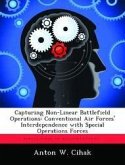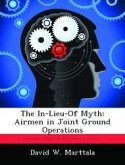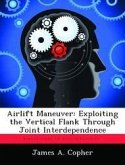Joint interdependence grows out of the growing reliance of the Army on the Air Force as it becomes more agile and sheds some of its organic fires. Therefore, this research paper only addresses those areas where air and ground operations merge, on the battlefield. There are four questions addressed herein: What are the implications of joint interdependence? What are the doctrinal friction points? Where is the potential for operational seams? What might be the options for a way ahead? Organizing the services to become more interdependent makes sense operationally and strategically. Yet, experiences in Afghanistan and Iraq demonstrate that the services have much to accomplish to institutionalize joint interdependence despite the spirit of cooperation that now exists between the air and land services in both areas of operations. The simultaneous ground operations of the US Army's V Corps and the US Marine Corps' I MEF during Operation Iraqi Freedom provides a unique opportunity to evaluate the issues of joint interdependence and propose potential solutions towards creating mutually enabling air and ground operations.








